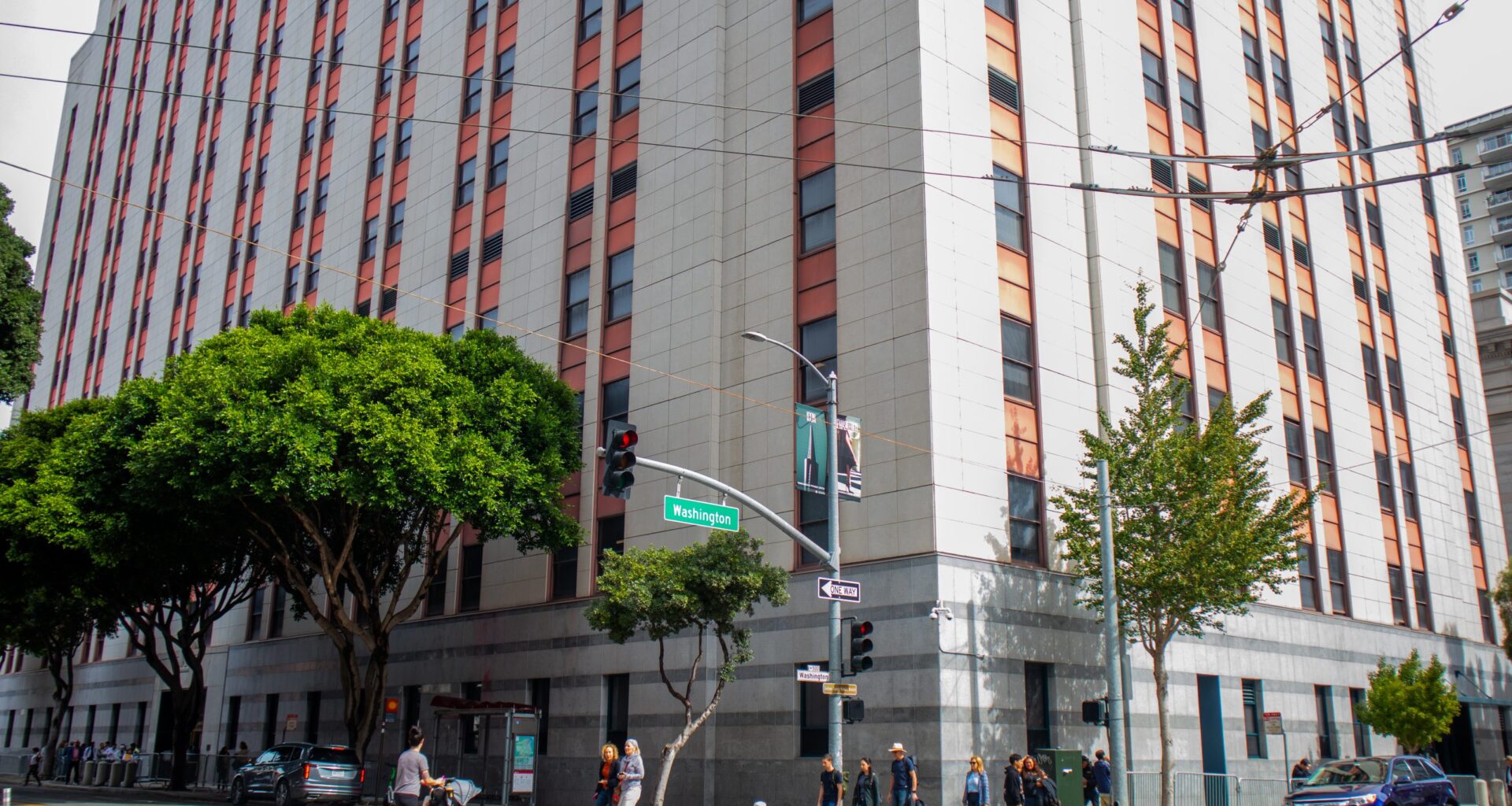A young Chinese man was arrested at San Francisco’s immigration court on Thursday.
He appeared for his hearing at 630 Sansome St. at 10:30 a.m. and, despite the lack of Mandarin-speaking deportation attorneys in the Bay Area, was represented by Sidi Gu, who appeared virtually on a large screen in the courtroom.
Still, there were issues.
Judge Patrick O’Brien asked the Department of Homeland Security attorney whether he sought to dismiss the Chinese man’s case — a sign that Immigration and Customs Enforcement agents would attempt an arrest.
“Yes,” the DHS attorney responded.
O’Brien sighed, putting his head into his hand.
“Since the attorneys can’t communicate with you,” O’Brien said, referring to the volunteer attorneys of the day, who did not speak Mandarin, “I’m going to tell you what’s going to happen.”
A volunteer with the nonprofit Faith in Action, who was there as a court watcher, offered to assist — she spoke “a little” Mandarin, she said. She had earlier accompanied a Spanish-speaking family to their hearing that morning.
Together using Google Translate, volunteer attorney Eva Landeros and the interpreter collected the man’s emergency contact information and other details that would help them file a habeas corpus petition, a document that challenges the legality of an individual’s arrest.
Judge O’Brien spoke through a virtual interpreter to the Chinese man, who appeared to speak no English, explaining that he would be arrested.
“Your client is going to be detained when he leaves the courtroom,” O’Brien said to Gu.
And when he exited the courtroom, the man was met by three ICE agents, one who appeared to speak fluent Mandarin. They took him by his arm and led him down the hallway to be detained.
He was the fifth person arrested that day. The others included a Nicaraguan woman, a Guatemalan man, a Colombian man and a Colombian woman.
The process has become somewhat orderly. Earlier that morning, during the 8:30 a.m. hearings, Milli Atkinson, an attorney of the day with the San Francisco Bar Association, addressed the four Latino asylum-seekers in Spanish, warning them that ICE would detain them in the courthouse halls.
After collecting emergency contact information and giving them packets of legal information, Atkinson and a second volunteer attorney, Eva Landeros, escorted them out of the courtroom, where ICE led them to the sixth floor to process their arrest.
Still, asylum-seekers are generally unprepared for what will happen.
Around 9:30 a.m., a Nicaraguan woman leaned forward and whispered to Atkinson: “Me siento que me estoy ahogando.” I feel like I’m drowning.
